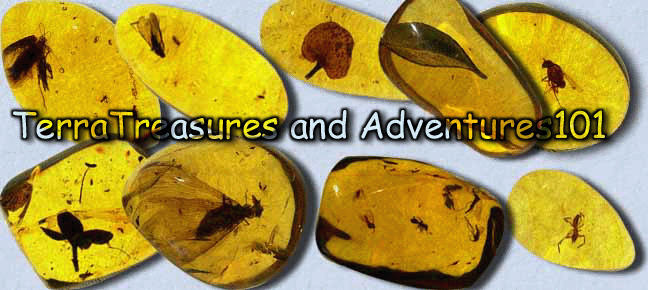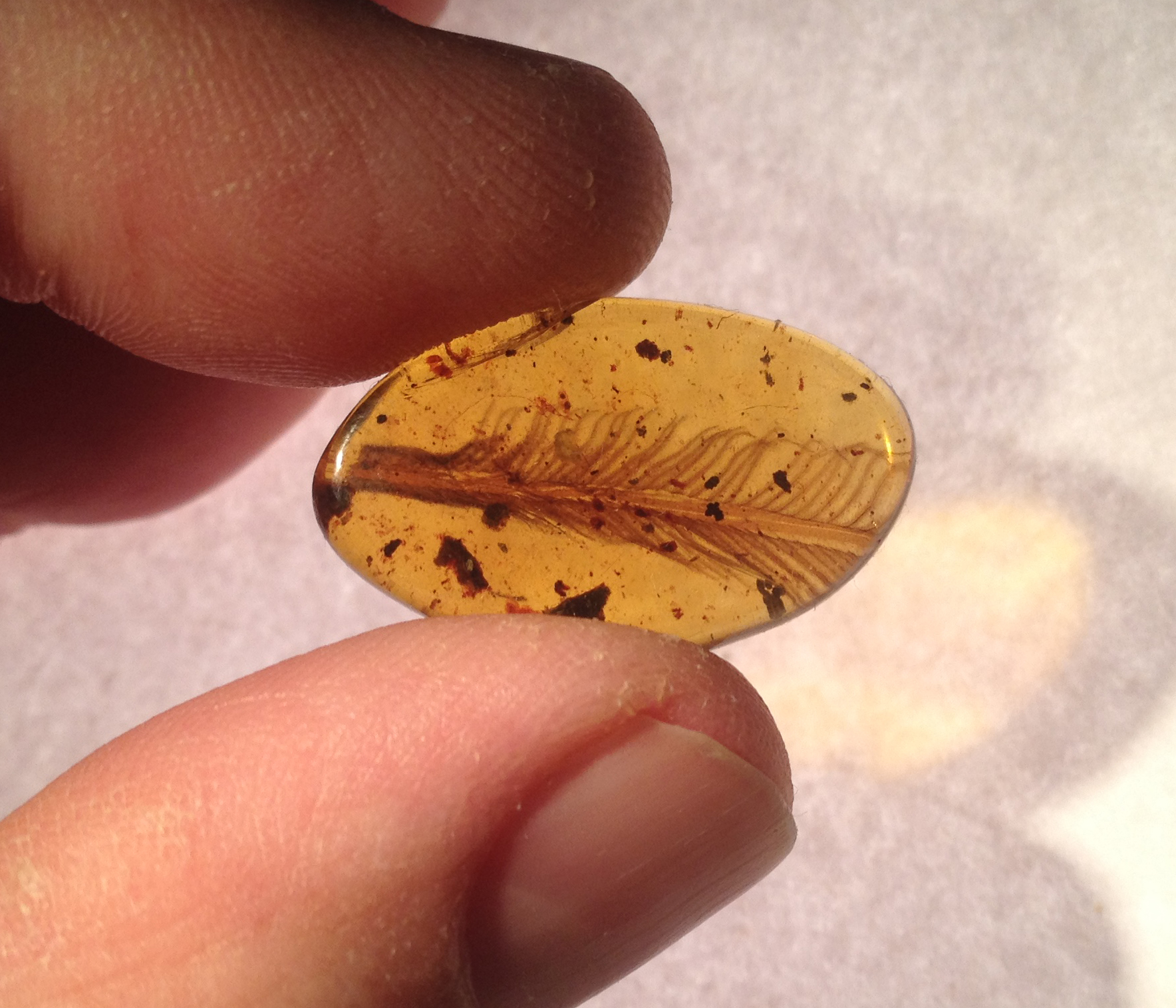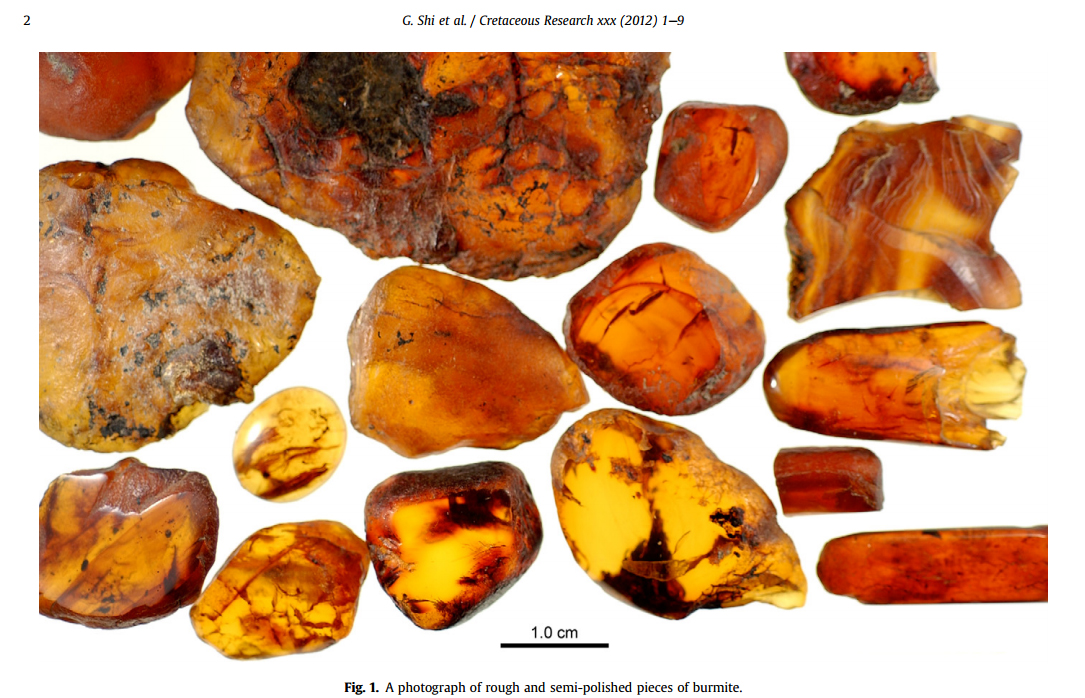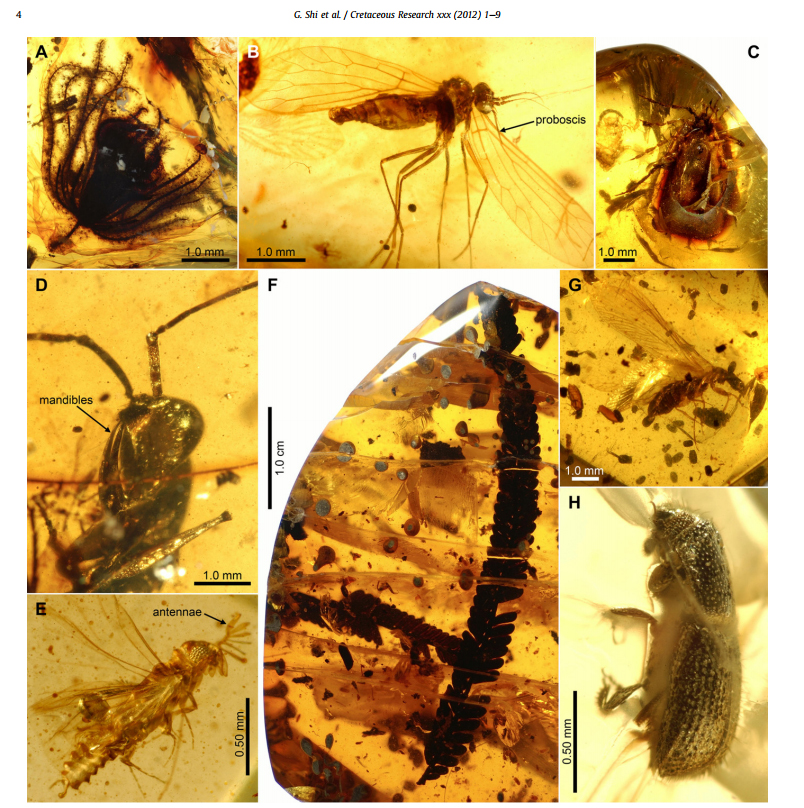
Cretaceous Amber (~98.8 million years old) from Myanmar (Burmese)
| Shi, Grimaldi et al "Amber from northern Myanmar has been commercially exploited for millennia, and it also preserves the most diverse palaeobiota among the worlds’ seven major deposits of Cretaceous amber. Recent estimated ages vary from Albian to Cenomanian, based on palynology, an ammonoid, and Mesozoic insect taxa preserved within the amber. The burmite-bearing rock is sedimentary and consists mainly of rounded lithic clasts (0.03 w 0.15 mm in diameter), with minor fragments of quartz and feldspar. Among the lithic clasts are mostly volcanic rocks. Amber from northern Myanmar, called Burmese amber or merely “burmite”, is the only Cretaceous amber deposit in the world that is exploited commercially, as well as the first to have been studied scientifically. The history of its use has been reviewed by Zherikhin and Ross (2000), Grimaldi et al. (2002), Cruickshank and Ko (2003), and Ross et al. (2010). Briefly, burmite had been used primarily in carvings for at least two millennia by Chinese people, for which the material is ideally suited (Grimaldi, 1996). The deposits in the Kachin state, northern Myanmar, are productive (an estimated 83 tons were exported between 1898 and 1940), and some amber pieces are very large (the largest is 15 kg, in the Natural History Museum, London). Moreover, colours vary from a transparent yellow to a highly desirable deep red (Figs. 1e3), theamber resists fracturing and is relatively hard (1.2 times harder than Baltic amber), and it receives a glassy polish. Burmite mining lapsed from just before the independence of Burma from Britain in 1947, and did not resume until the late 1990s. The greatest value of burmite, however, is scientific. Amber in general preserves biological inclusions with microscopic fidelity, so as a mode of fossilization it is unparallelled for phylogenetic and palaeontological studies of Cenozoic and late Mesozoic terrestrial life forms (Grimaldi and Engel, 2005). Amber from the Cretaceous is further significant since it coincides with the radiation of the angiosperms and major tectonic shifts in continental positions, and precedes the famous end-Cretaceous impact event. Of the seven major deposits of amber from the Cretaceous Period (Table 1), Burmese amber contains probably the most diverse palaeobiota. For example, approximately 228 families of organisms (primarily arthropods) have been reported from burmite, compared to a range of 68e125 families recorded thus far in the other six major amber deposits. Only the much larger, commercially exploited deposits from the Miocene of the Dominican Republic and Mexico, and the Eocene Baltic amber have yielded more families and species. Interestingly, burmite contains an exceptional diversity and abundance of the most diverse order of insects, the Coleoptera (16% of all studied inclusions, representing more than 40 families, vs. 2e8% and around a dozen families in the other Cretaceous ambers). Among the more significant records of organisms in burmite is the only Mesozoic fossil of the phylum Onycophora (“velvet worms”) (Grimaldi et al., 2002), as well as the oldest definitive Mesozoic records of mosquitoes, family Culicidae (Borkent and Grimaldi, 2004), and the insect orders Embiodea (Engel and Grimaldi, 2006), Strepsiptera (Grimaldi et al., 2005a, b), and Zoraptera (Engel and Grimaldi, 2002) (Fig. 4). Oddly, burmite also preserves the youngest records of several archaic insect groups, notably Postopsyllidium of the hemipteran family Protopsyllidiidae (previously known from the PermianeJurassic) (Grimaldi, 2003), and Parapolycentropus, of the scorpionfly family Pseudopolycentropodidae (TriassiceBarremian) (Grimaldi et al., 2005a) (Fig. 4). Parapolycentropus is remarkable for the loss of the hind wings, specialized antennae, and long, styletiform proboscis, convergently resembling a mosquito. Burmite also preserves early, primitive species in groups that are highly social today, notably Formicidae (ants) and Isoptera (termites) (Engel and Grimaldi, 2005; Engel et al., 2007). One of these presumably social insects is Haidomyrmex (Dlussky, 1996), arguably the most peculiar ant known (Fig. 4).
|
 |
|
Burmese Amber Specimens |
Burmese Amber Research Papers |
|| amber
for sale ||
|| dominican
amber mines || burmese amber ||
new
jersey amber ||
|| alaskan
amber
|| wyoming
amber || amber
research ||
|| cambay amber || hell creek amber ||
|| photos of the Sterling
Hill & Franklin Zinc Mines || fluorescent
minerals For Sale ||
|| about us || ordering info || home
||


